When it comes to photography, the James Webb Space Telescope stole the show in 2022, with visuals that reminded us what an outrageously beautiful place the Universe can be (see more on that below). But to tell the truth, over the last 12 months there was no shortage of mind-blowing images that changed our perspectives.
Here’s our selection of the best, and what they taught us…
Hole at the heart of the Galaxy
Event Horizon Telescope – 12 May
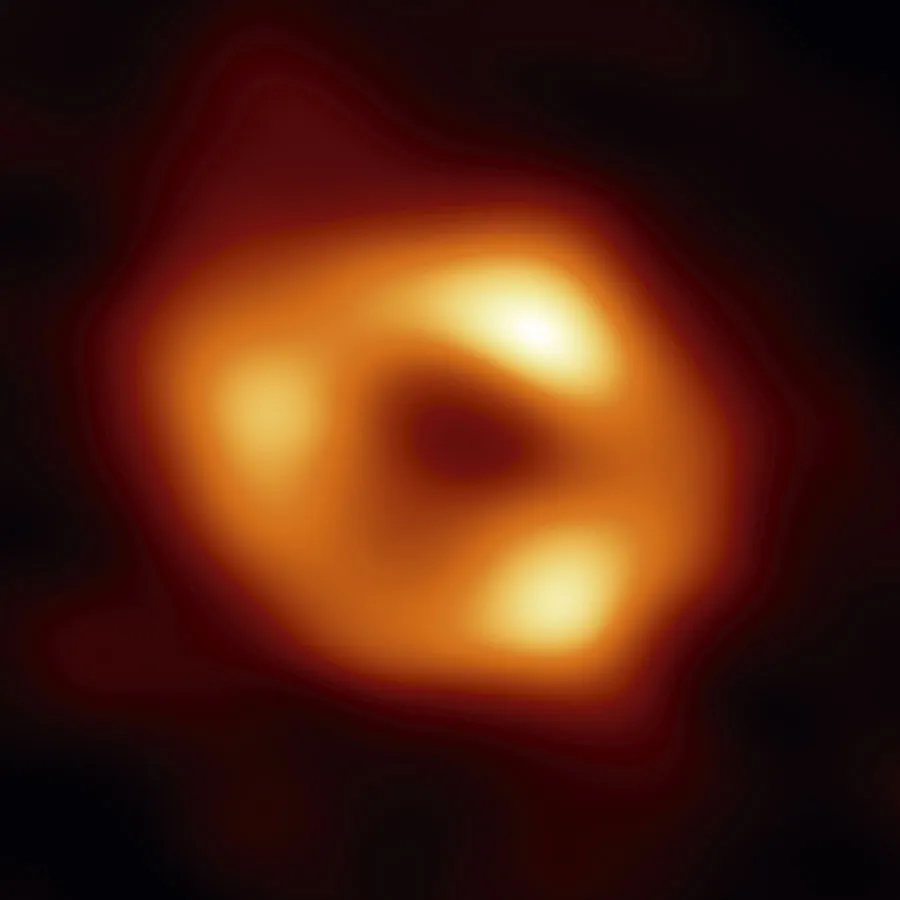
You would have thought if there was a supermassive black hole at the centre of the Galaxy, we’d have noticed it before. But that’s the thing about black holes: you can’t see them. You can only see the gas whirling around them.
The one at the centre of the Milky Way, named Sagittarius A*, is around 27,000 light-years away from Earth and we only found it by training eight radio telescopes on it all at the same time. It took 300 researchers and their supercomputers five years to analyse the data they collected before they could finally release this first portrait of the previously unseen object.
Big baby mummy
Yukon, Canada –21 June

This 30,000-year-old baby woolly mammoth, ‘Nun cho ga’ (big baby animal), takes her name from the Hän language spoken by Indigenous peoples in Yukon, Canada, where she was found in June. Nun cho ga’s remains were discovered by gold miners and rescued by geologists.
It’s thought she probably died after getting stuck in mud, which would have initially preserved her body, but permafrost kept her intact over the millennia. DNA has previously been extracted from much older mammoths, but none so well preserved. Her future is in the hands not just of scientists, but also of the Tr’ondëk Hwëch’in people who own the land where she was found.
The ruins of success
Jezero crater, Mars –19 April
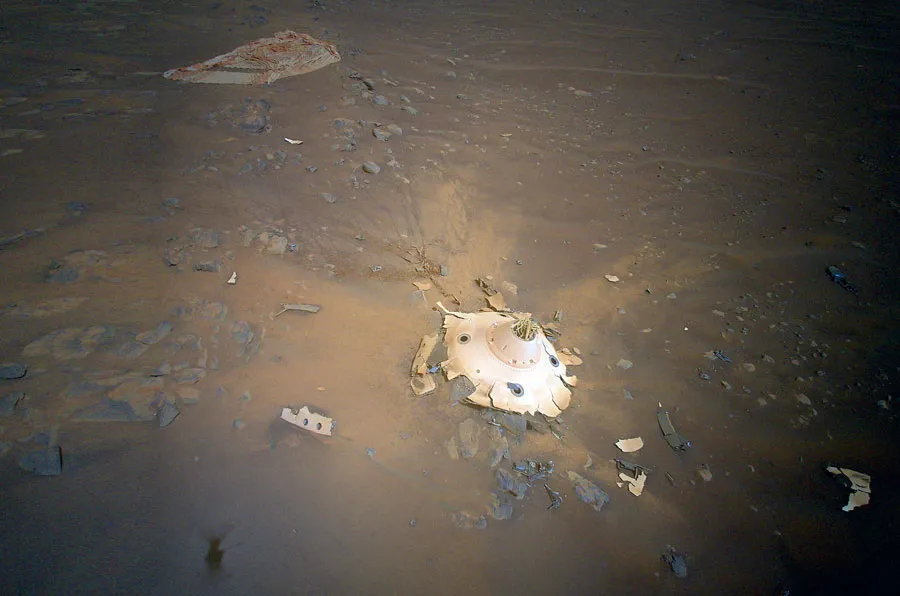
These shattered remains may look like a failed space mission, but they’re very much a sign of success – for two reasons. First, these are the backshell and parachute of NASA’s Perseverance rover – landing gear the robot no longer needed after surviving a 126km/h descent to the surface of Mars in 2021.
Second, the picture was taken by Ingenuity, a miniature helicopter with a metre-wide rotor span that caught a ride to the Red Planet with the rover. Ingenuity has a flight range of only 300m but, as of November 2022, had clocked up 34 flights and covered a total of 7km. Images like these help NASA to understand whether a landing occurred as expected and what could be improved for future missions.
Read more about space exploration:
- Meet the autonomous Moon robots about to change space travel forever
- Can space exploration be environmentally friendly?
One of a kind
Servion, Switzerland – May

Hatched at a Swiss zoo in May, this newborn tortoise is the first example of an albino Galapagos giant tortoise (Chelonoidis nigra) known in captivity or the wild. Its mother, pictured in the background, and sibling are both black.
According to the zoo, albinism is rarer in tortoises than in humans, with the chance of any tortoise being albino estimated to be around 1 in 100,000. However, while this baby may be unique, its lack of the skin pigment melanin makes it particularly susceptible to skin cancer.
In the wild, this extra threat to an already endangered species would seem to make survival unlikely, but in captivity it can be kept out of sunlight.
Read more about tortoises and turtles:
No bum non-ancestor
International research team – 17 August

Are we descended from a 530-million-year-old animal with a giant mouth and no anus? Apparently not. Well, good. That’s one thing scientists have sorted out this year. We’re all done here. Unless, of course, you’re wondering whose family tree this bumless blob (officially Saccorhytus coronarius) belongs to.
The answer, according to the latest thinking, is crabs, spiders and roundworms. Previous evidence linking it to our line was based on limited specimens. The new work, involving high-resolution imaging and many specimens, enabled researchers to create the detailed reconstructions shown here.
Spiderbot
Rice University, Texas – 25 July
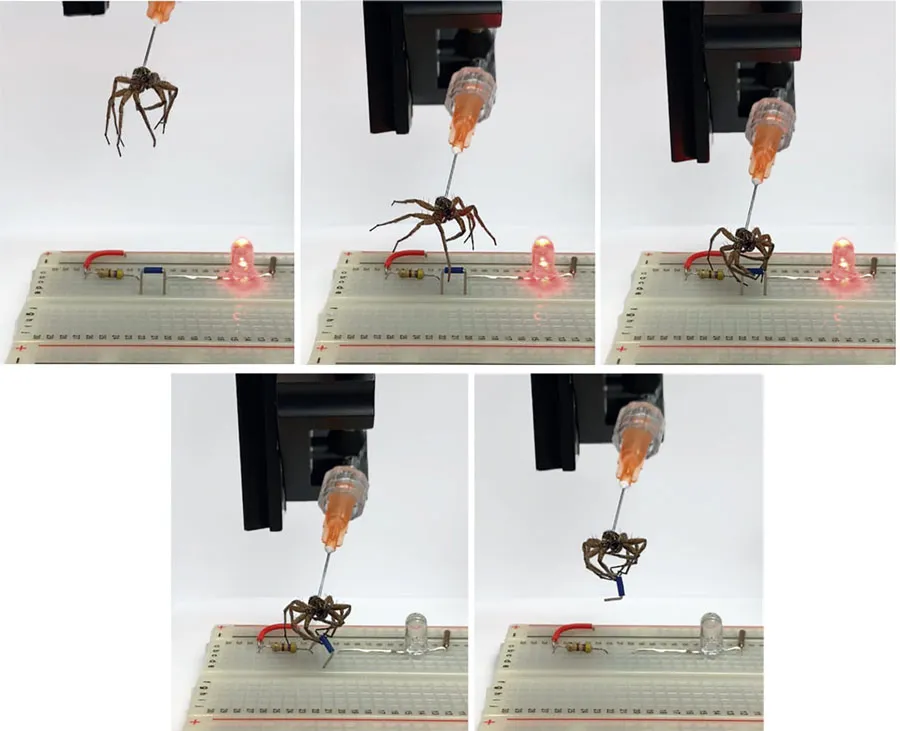
Researchers from Rice University thought it would be fun to turn a dead spider into a robotic gripper, in order to pick up other objects. Overkill, perhaps, but they claim that it heralds a new era of ‘necrobotics’ (robots made from dead things).
Actually, their technique is pretty simple: take a spider, stick a syringe in it, then apply pressure by squirting air into its cold, dead body. This works because spiders use hydraulics to force haemolymph (their version of blood) into their limbs, forcing them to extend. When spiders die, they lose this ability, and so they curl up.
T-minus 11 seconds
Dimorphos –26 September
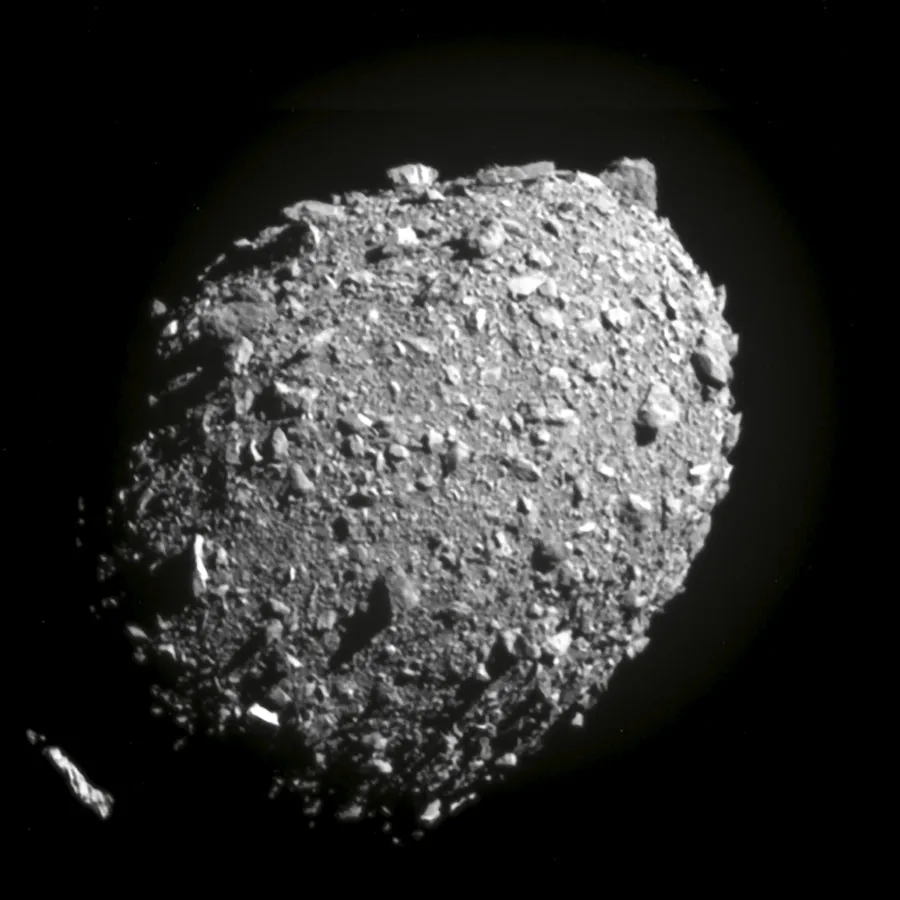
This was one of the last images NASA’s DART (Double Asteroid Redirection Test) spacecraft transmitted. Just 11 seconds later, it crashed into its target, the asteroid Dimorphos (pictured here from 68km away), at around 24,000km/h. Despite being fatal for the spacecraft, the mission proved a hit for the US space agency.
After crunching the data, it confirmed that DART had successfully altered the trajectory of Dimorphos in its orbit around its parent asteroid, Didymos. So, hopefully, when bigger, badder asteroids look set to destroy Earth, we now have the knowledge to send them off-course.
Tiny tower block
University of Cambridge, UK – 7 March
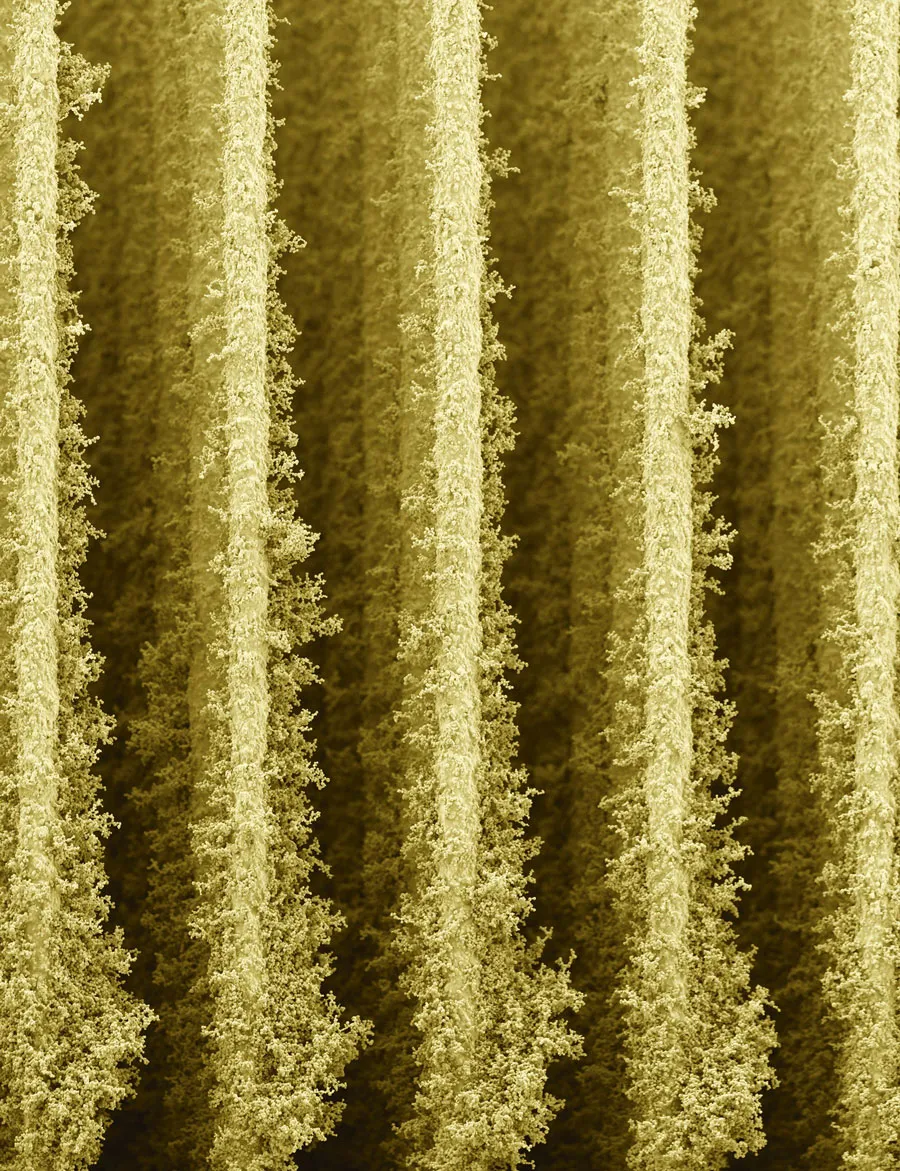
Two-thirds of a millimetre might not sound very tall, but when you’re a bacterium, it’s bigger than the Empire State Building. It’s also the height of these 600-micrometre-high ‘nano-skyscrapers’, which are actually tiny 3D-printed towers of electrodes that UK researchers built to house light-harvesting organisms called cyanobacteria, which make their energy via photosynthesis, just like plants.
The towers are designed to cram in as many cyanobacteria as possible while maximising their exposure to sunlight. By plugging into the electrodes, the scientists show that it’s possible to use cyanobacteria as a source of sustainable energy.
Satellite spinner
New Mexico, USA –September
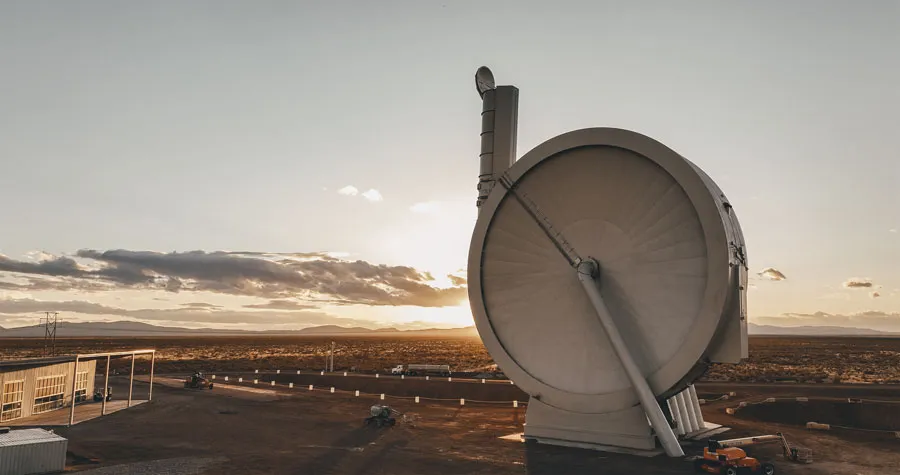
This is SpinLaunch: a prototype system for launching satellites and other payloads into space using kinetic energy instead of the chemical fuel in traditional rockets. The prototype is a third of the size of the planned 100m-wide full-scale system, but is capable of spinning payloads at 8,000km/h and 10,000G before flinging them skyward through a launch tube.
Although small rocket engines will still be needed to get payloads into orbit, it’s claimed the system cuts down on fuel and infrastructure by around 70 per cent. In April, SpinLaunch signed a ‘Space Act Agreement’ with NASA and by September was testing the system with components of the space agency’s own satellites.
Historic mission
International Space Station – 22 July

On 22 July, Samantha Cristoforetti emerged from the airlock of the International Space Station (ISS) as the first-ever European woman to take a spacewalk. There was no time to bask in the glory though, as the Italian astronaut had work to do on the new European Robotic Arm (ERA), a robotic attachment to the space station designed to cut down on the need for human spacewalks.
Staying outside for seven hours in all, she and Russian cosmonaut Oleg Artemyev installed new parts on the ERA. In September, Cristoforetti became the first female European commander of the ISS before returning to Earth safely in October.
Plants in pain
Norwich, UK –21 October

Plants don’t have nerves. For a long time, though, scientists were fascinated by the fact that they seemed to deploy one of the chemical messengers that humans use to transmit nerve impulses – calcium – when they get injured. However, this year, scientists at the John Innes Centre in the UK used new fluorescent imaging techniques (pictured here in cress seedlings) to show that this calcium rush isn’t a moving wave or impulse.
Instead, it’s a response to another chemical, glutamate, that’s released at the injury site. Glutamate molecules travel along the corridors between plant cells, triggering the opening of cell ‘doors’ that let out calcium as they go. So it’s glutamate, not calcium, that’s the messenger.
Black Beauty’s birthplace
Curtin University, Australia –12 July
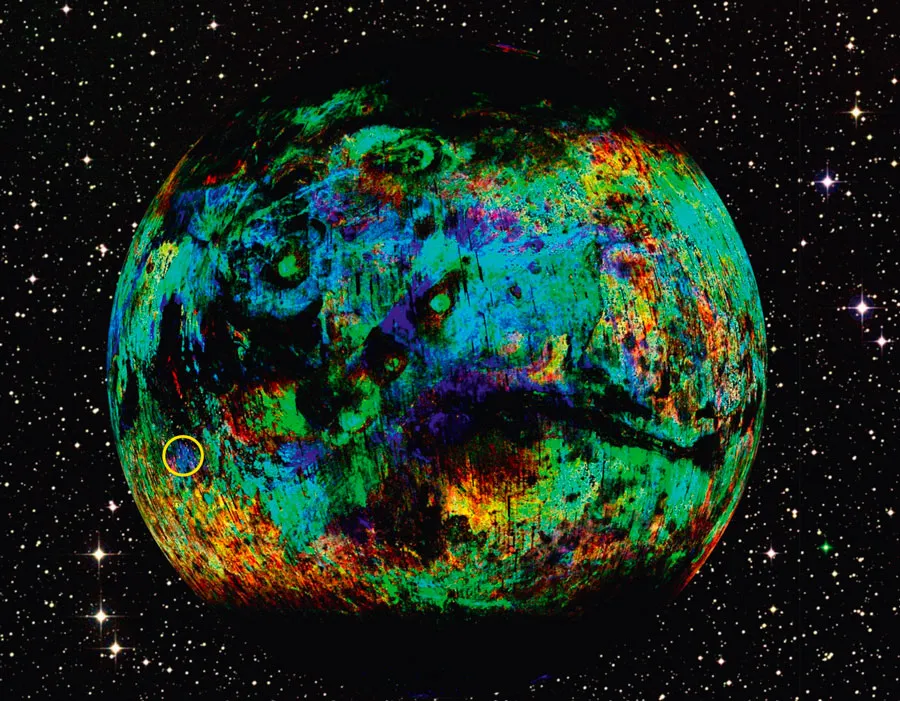
In 2011, a nomad named Bahba picked up a lump of black rock in the Sahara Desert. It turned out to be a piece of 4.5-billion-year-old meteorite forged in magma chambers below the surface of a young Mars and flung to Earth when a comet hit the Red Planet 5-10 million years ago.
Now known as ‘Black Beauty’, it took scientists until this year to pinpoint the meteorite’s origins in the Terra Cimmeria-Sirenum province (circled). The Australian team did it by analysing 94 million Martian craters, colour-coded here by age and size. Given Black Beauty is so old, they think the region could hold clues to the planet’s early history.
Hiking hotspot
Reykjanes Peninsula, Iceland – 3 August

Iceland is well known for its lava fields, but new volcanic activity on the Reykjanes peninsula close to Reykjavik is proving particularly accessible to day-trippers from the capital. This eruption in the Meradalir Valley, starting on 3 August, attracted thrill-seeking hikers to a 300km fissure in the Earth’s crust that, within a fortnight, had spewed out 10 million cubic metres of lava.
It came just a year after another large vent opened up a kilometre away. Until then, the region hadn’t seen any major volcanic activity since the 12th Century, when medieval Iceland was ruled over by chieftains known as goðorð.
Brightest-ever starburst
Neil Gehrels Swift Observatory –9 October
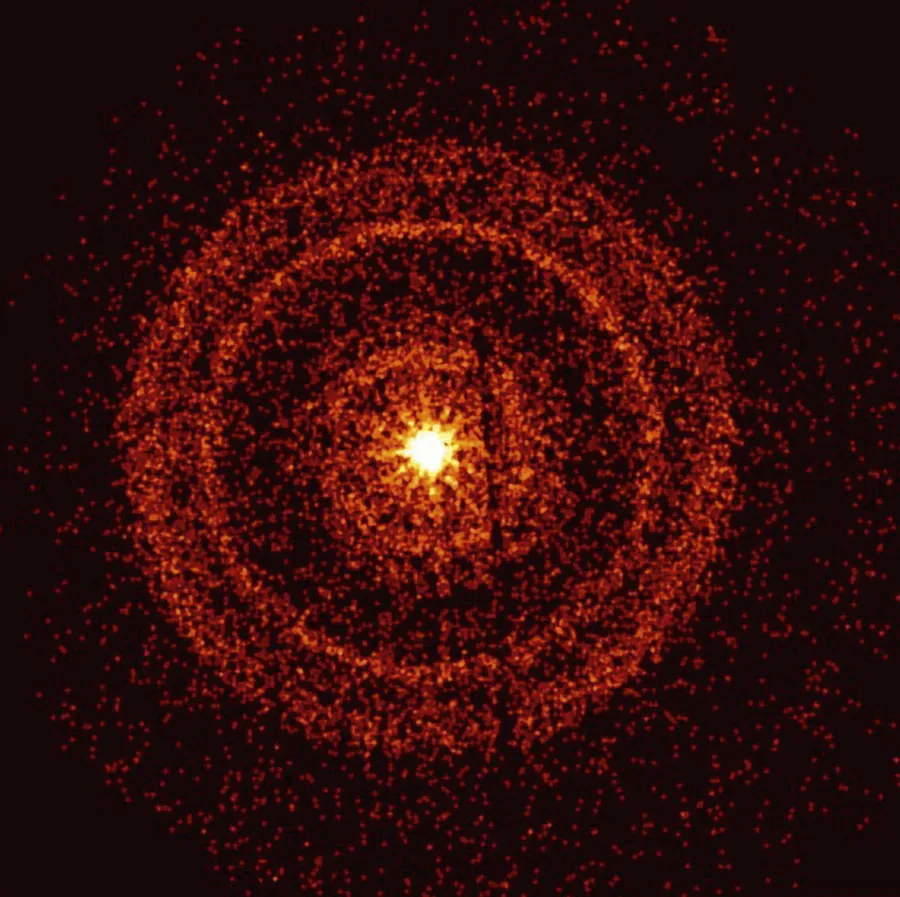
Gamma-ray bursts (GRBs) emanate from high-energy explosions occurring when massive stars much hotter than our Sun collapse to form black holes or neutron stars. Pictured is GRB 221009A, the brightest GRB ever witnessed, detected on 9 October and lasting a full 10 hours.
It was so bright that even the Fermi Gamma Ray Space Telescope – designed specifically for GRBs – couldn’t deal with what it was emitting. But as the energy emitted by such an explosion is converted into different kinds of radiation, the X-ray telescope aboard the Neil Gehrels Swift Observatory was able to capture this image from X-rays as they bounced off dust in the Galaxy. GRB 221009A took place about 1.9 billion light-years away, which is close in GRB terms.
War scene in a war zone
Al-Rastan, Syria – 12 October
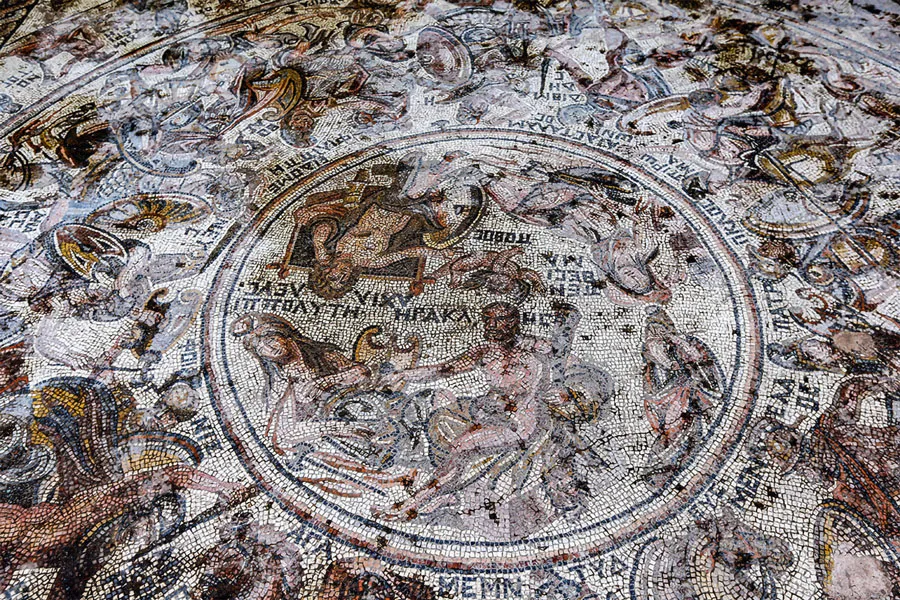
Part of this 120m mosaic was unearthed in the Syrian city of Al-Rastan during the Syrian Civil War, but it’s only now that archaeologists have been able to excavate it more completely. The 1,600-year-old artwork, photographed in October, depicts scenes of soldiers fighting in the Trojan War, which according to Greek mythology involved the Greeks sneaking into the city of Troy in a wooden horse.
It may extend even further than 120m2 – the excavation is still ongoing. Other artworks and places of historical importance, including mosaics and churches, were destroyed during the Syrian conflict in the last decade, but museum researchers still hope to discover more beneath the ruins.
Window on the Universe
London, UK – 12 July
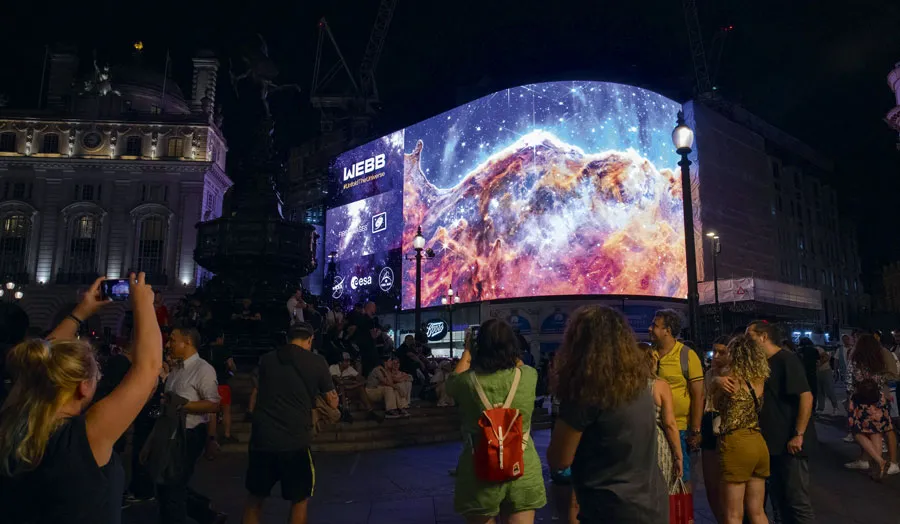
This stunning image beamed to Earth by the James Webb Space Telescope (JWST) reveals details of far-flung regions of the Milky Way that we’ve never seen before. Launched on Christmas Day 2021, from a spaceport in French Guiana, the JWST is the largest telescope ever sent into space. It uses infrared light to show us stars that were previously obscured from view by dust.
Its first images, broadcast here to crowds in Piccadilly Circus, London, show the edge of a star-forming region around 7,600 light-years from Earth, in the Carina Nebula, which is home to stars millions of times brighter than our Sun.
Read more about the James Webb Space Telescope:
- 10 James Webb Space Telescope memes that are out of this world
- NASA’s James Webb telescope spots ‘sparkling’ galaxy that may contain the oldest stars ever seen
- Why do all the stars have 8 points in the James Webb images? An astronomer explains
Intelligent exoskeleton
Mexico City, Mexico –18 October
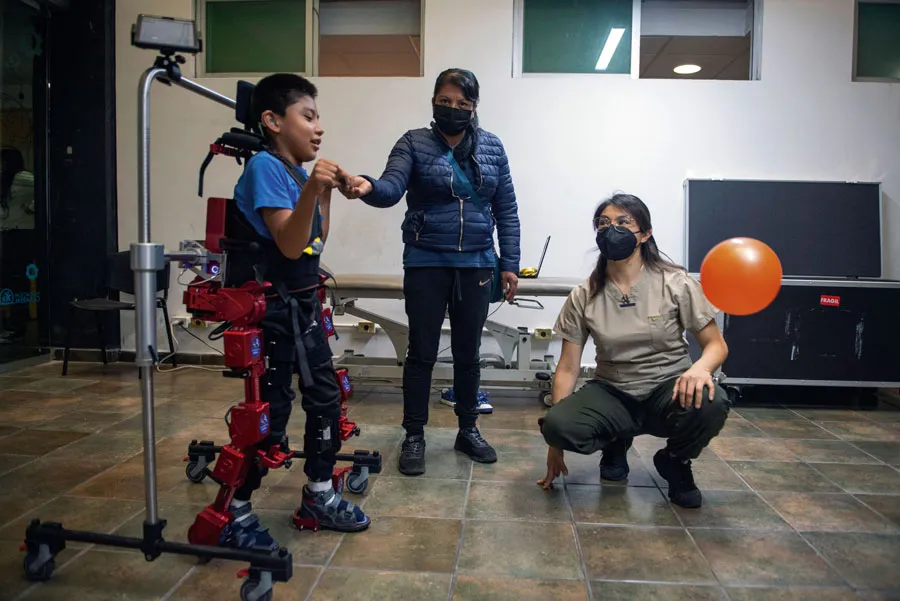
The Atlas 2030 exoskeleton was specially designed for children by Spanish robotics engineer and inventor, Elena García Armada. Until now, exoskeletons have been a high-tech addition to rehab programmes for adult patients who have suffered strokes or traumatic brain and spinal injuries.
But the suits can’t just be downsized for children, whose physical limitations are more often related to neurological conditions – as in the case of David Zabala (pictured), who has cerebral palsy. These conditions require a more ‘intelligent’ suit that can read the intention of the walker and adapt its gait accordingly.